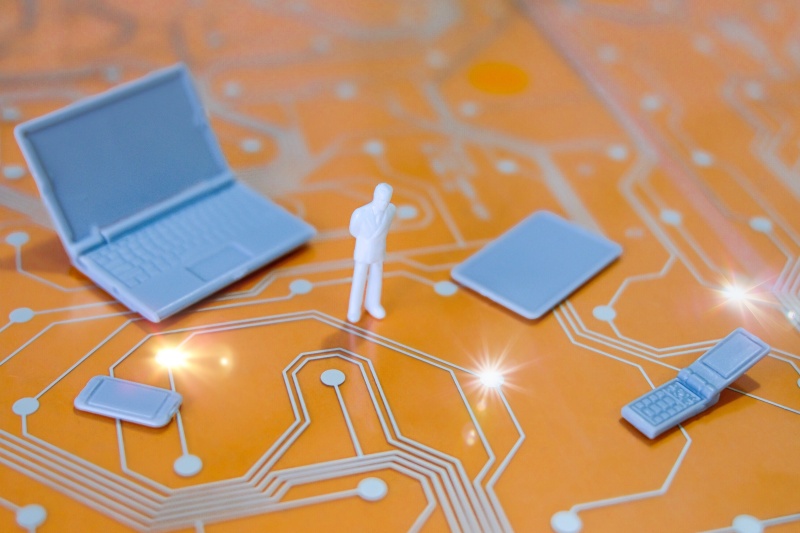The internet is like a huge web that links millions of computers all over the world. We can use it to talk to our friends on social media, order food online, and do a lot more. But have you ever been curious about how everything works? Let’s take a simple look at how the internet works its magic.
How the Internet Works in Simple Terms
Imagine the internet as a massive network where computers can talk to each other and share information. To make this happen, the internet uses something called « packet switching. »
This means that data traveling on the internet is broken down into little packets, each with details like where it’s going and how to put it back together.

There are two key protocols the internet relies on:
- Internet Protocol (IP): Think of this as the postman who knows where to deliver your mail. IP handles addresses and ensures data gets to the right place.
- Transmission Control Protocol (TCP): TCP is like a reliable messenger. It makes sure your data arrives safely by establishing a connection and preventing loss.
Besides these, there are other protocols for different tasks. For instance, SMTP helps send emails, FTP transfers files, and HTTP lets your web browser talk to websites.
What Happens When You Surf the Internet
Packets and protocols are the two main ideas that make up the core of how the Internet works.

Packets
A packet is a small piece of a bigger message in networking. Each packet has both data and details about that data. The « header » is the information about the packet’s data.
It goes at the front of the packet so that the machine that gets the packet knows what to do with it.
To understand what a packet header is for, think about this. How some consumer goods come with directions on how to put them together.
When data is sent over the Internet, it is first broken up into smaller packets. They’re turned into bits.
Different networking devices, like routers and switches, send the packets to where they need to go.
When the packets get to their target, the device that gets them puts them back together in the right order so that the data can be used or shown.
Compare this to how the Statue of Liberty was built in the United States. France was the first country to plan and build the Statue of Liberty.
But it was too big to fit on a ship, so it was sent to the U.S. in pieces with directions on where each piece should go.
Workers who got the pieces put them back together to make the figure that stands in New York today.
This took a long time for the Statue of Liberty, but sending small bits of digital information over the Internet is very fast.
For example, a picture of the Statue of Liberty saved on a web server can travel around the world one packet at a time and load on someone’s computer in milliseconds.
A method called « packet switching » is used to send packets across the Internet. Routers and switches in the middle can handle packets independently of each other, without taking into account where they came from or where they are going.
This is by design so that no single link takes over the network. If computers sent data to each other all at once and didn’t switch between packets, a link between two computers could use up multiple wires, routers, and switches for minutes at a time.
Basically, only two people would be able to use the Internet at the same time, instead of almost anyone who wants to do so.
Protocols
How do these principles relate to online websites and apps? Well, let’s look more closely at what happens when you load a webpage, like the one you’re reading.
Piece by piece, the site is loading.
Think of it this way: in order to display this article to you, it had to make its way across the Internet in a series of very little parts, rather unlike jigsaw puzzle pieces.
These pieces, called « data packets, » traveled from our web server to your computer or device through wires, radio waves, and even routers and switches.
These packets were picked up by your computer or mobile device and passed on to your browser.
Then, like a magician, your computer put all of these pieces together to show you the text you’re reading right now.
Here’s what happened:
- DNS Query. When your computer chose to open this page, it basically asked, « Hey, where’s this website address? » It did a DNS query to find out the IP address of the page.
- TCP Handshake: Once your computer knew the IP address, it made a connection there, just like when you call someone on the phone.
- TLS Handshake: Your browser set up security between the web server and your device to make sure everything was very safe. So, hackers wouldn’t be able to sneak a peek at the data as it moved between them.
- HTTP Request: Your computer asked for everything on this page.
- HTTP Response: The web server sent back the goods as pieces of HTML, CSS, and JavaScript code. Once your device got all the pieces and made sure none were missing, your browser did its magic to show you this article about how the Internet works. What do you know? It only took a second or two for everything to happen.
So, when you surf the internet, it’s like sending letters and getting replies in a language your computer understands. It’s all thanks to protocols like IP and TCP that make sure everything gets to the right place and works smoothly. And that’s the simple explanation of how the internet works!

